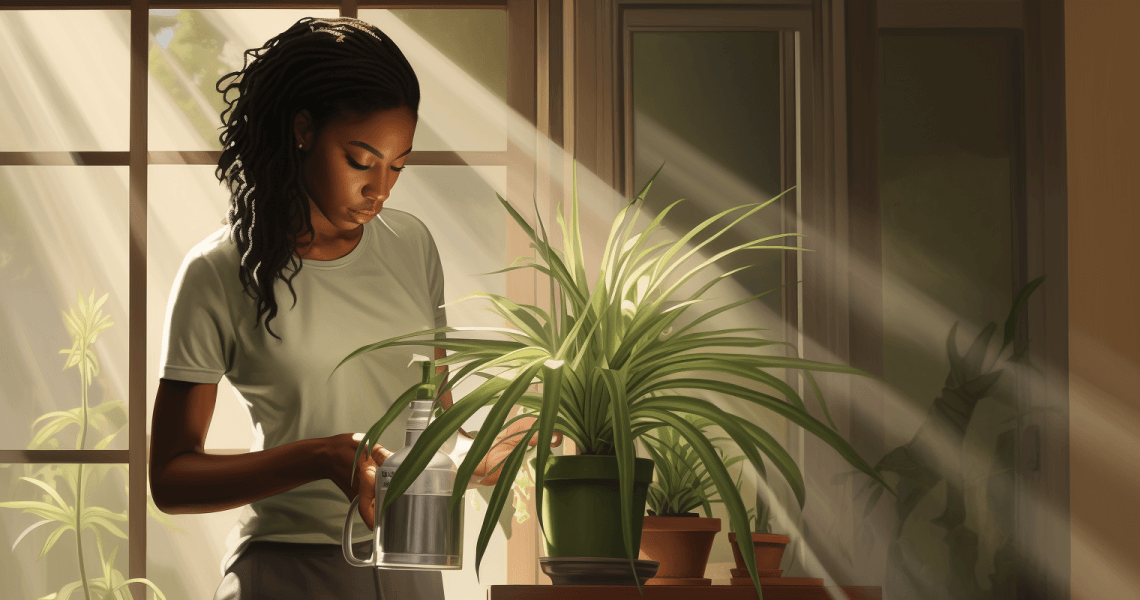Step inside a Kenyan home, and you might find a delightful surprise — indoor plants!
These days, more and more Kenyan folks are embracing the joy of becoming “plant moms” and “plant dads.” But why the fuss about indoor plants?
Well, it’s simple. Indoor plants do wonders for our homes. They have become more than just decorative elements. Plants also help to purify and make the air we breathe fresher.
READ ALSO: Add Indoor Plants to Enhance Aesthetics
As we delve into this green revolution, we’ll uncover the myriad benefits of indoor plants, from their remarkable capacity to improve air quality to their innate ability to infuse spaces with natural beauty.
Join us as we explore the greenery that’s flourishing within Kenyan homes, nurturing a sense of well-being and a deeper connection to the earth.
Table of Contents
What Are Indoor Plants?
Indoor plants are plants specially cultivated to thrive inside our homes. Indoor plants are cultivated indoors because they allow for precise control of the climate and manipulation of the environment to cater to the specific needs of the plants.
How to Choose a Good Indoor Plant
When choosing an indoor plant, there are several key qualities to consider:
- Healthy Root System: While it’s not always practical to inspect a plant’s roots directly, healthy roots are usually thick and light in color. This is a crucial factor in plant selection.
- Foliage Density: A good rule of thumb for foliage is that if you can’t see through it, the foliage is thick enough. Dense foliage often indicates a robust and healthy plant.
- Check for Signs of Disease: Examine the plant for any signs of pests or disease. Indications may include white dots on the leaves, sticky residue, or an unpleasant odor. Choosing disease-free plants is essential for your indoor garden’s health.
By considering these qualities, you can select indoor plants that are more likely to thrive and bring green beauty into your living spaces.
READ ALSO: Shelf Up Your Living Room
How to Take Care of Indoor Plants
How Much Sunlight Do Indoor Plants Need?
Light is essential for plants to grow, but not every indoor plant necessarily requires direct sunlight. It’s important to assess the lighting available in different areas of your home and position your plants accordingly.
The amount of light your indoor plants require varies based on their type. Succulents and cacti thrive with continuous daily sunlight. Foliage plants, on the other hand, typically need around 8 hours of light each day. However, the specific light needs can differ for different plant varieties.
How to Water Your Indoor Plants
Overwatering is a frequent error made by new plant caregivers. It’s crucial to recognize that each plant has specific watering needs.
Here’s a general guideline: Before watering, test the top inch of the soil by gently pressing your index finger into it. If it feels dry, water the plant generously until excess water drains from the pot’s bottom.
However, it’s important to avoid letting your plants sit in stagnant water, as this can promote root rot.
Nourishing/Feeding Your Indoor Plants
Indoor plants lack access to the natural nutrients found in outdoor soil. To ensure their well-being, it’s essential to provide regular fertilization during the growing season.
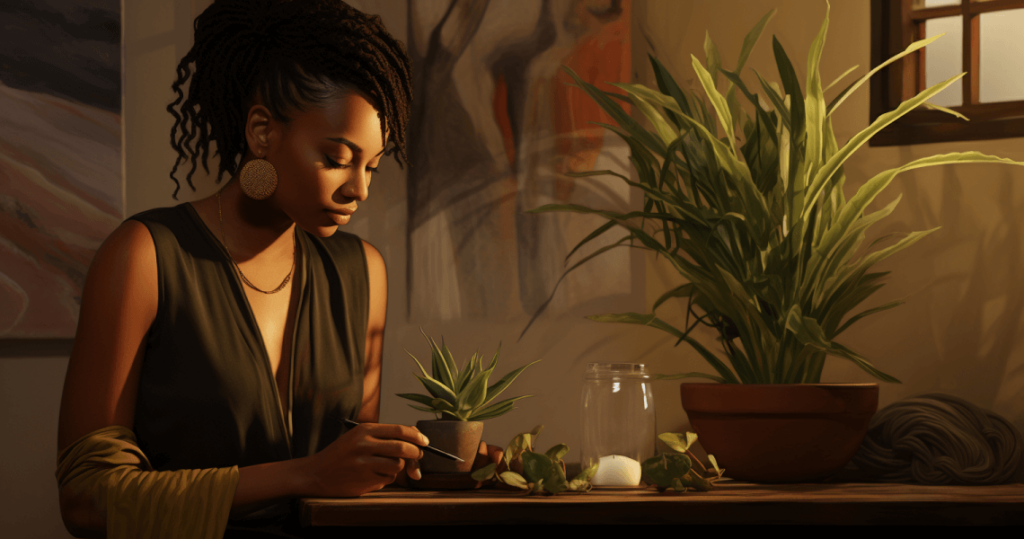
Here’s a simple and effective solution: Consider using tea leaves!
Yes, you read that correctly. Tea is naturally rich in tannic acid and nitrogen, which can nourish the soil where your plants grow. By watering your plants with leftover tea, you not only provide hydration but also offer valuable nutrients.
During the dormant season, it’s advisable to reduce or even halt fertilization. Instead, use a high-quality plant fertilizer designed for indoor plants. Follow the recommended dosage and schedule for each plant, guaranteeing they receive the essential nourishment necessary for robust growth and lush foliage.
Pruning for Perfect Indoor Plants
Pruning is a crucial element of plant care that serves to uphold their form and stimulate fresh growth.
To encourage fuller growth, trim away any yellowing or lifeless leaves, and gently pinch off elongated stems. Keeping your plant’s leaves clean from dust is also essential for effective photosynthesis. Regular pruning of your indoor plants not only fosters a denser appearance and eliminates unhealthy leaves, but also helps to maintain their desired shape.
Guard Against Pests and Diseases
Much like their outdoor counterparts, indoor plants can also become targets for pests. It’s essential to conduct regular inspections of your plants, keeping an eye out for telltale signs of infestation such as webbing, sticky residues, or nibbled leaves.
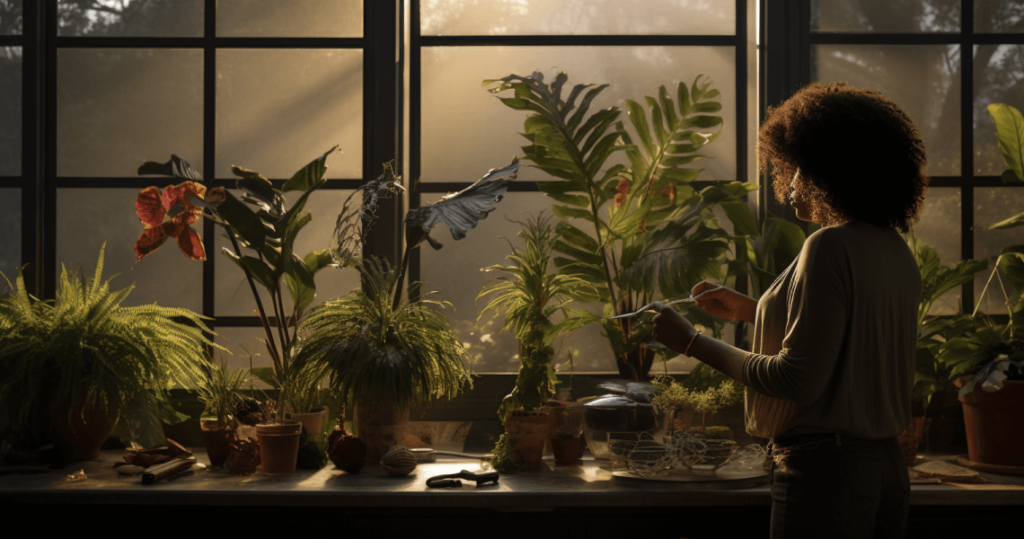
If you spot any signs of trouble, take immediate action using natural remedies or mild insecticidal soap to prevent infestations from taking hold. Stay watchful for common culprits like aphids, spider mites, and mealybugs.
Familiarize yourself with the indicators of infestation and promptly treat affected plants, employing either organic or chemical solutions as needed. This proactive approach safeguards the overall well-being of your indoor garden.
Popular Indoor Plants in Kenya
- Snake Plant
This hardy houseplant, commonly referred to as the Snake Plant, ranks among the most popular choices for indoor greenery. It boasts sturdy leaves that can range from a modest six inches to an impressive eight feet in height, depending on the specific variety. Snake plants typically exhibit green banded leaves, often accented with a distinctive yellow border.
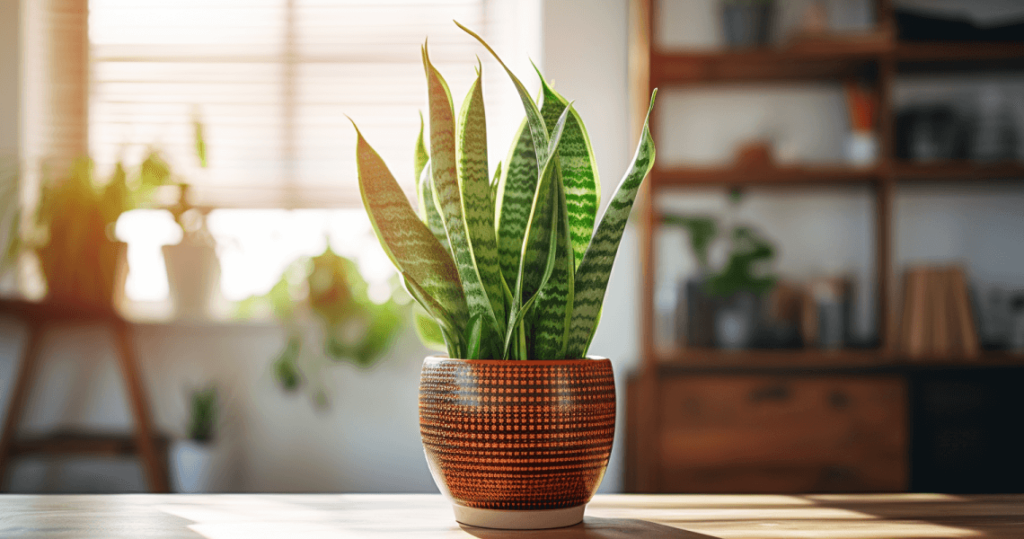
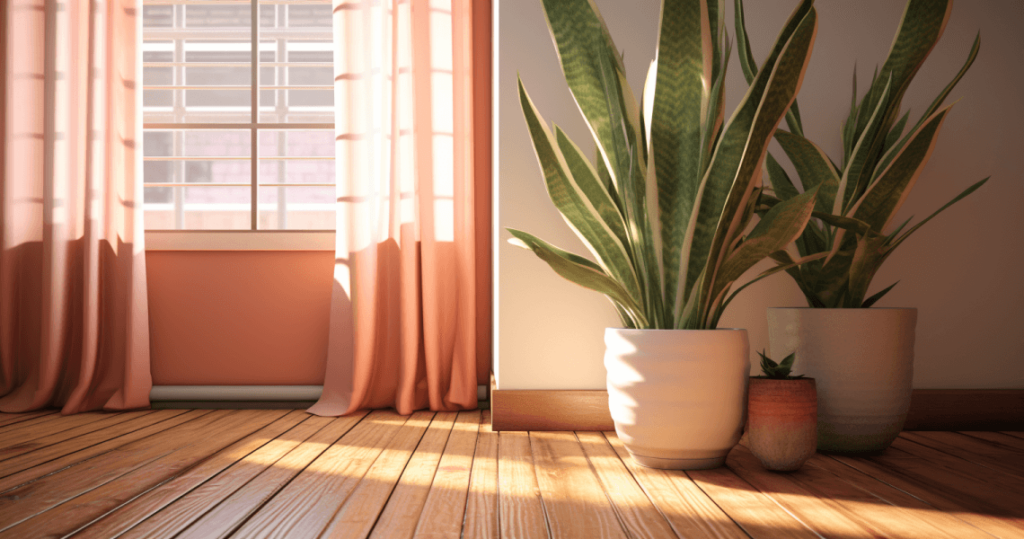
What makes the Snake Plant even more appealing is its multitasking nature. This resilient plant has gained favor not only for its aesthetics but also for its remarkable ability to purify indoor air by effectively removing toxins from the air.
- Monstera
Monstera plants are truly unique and undemanding houseplants, known for their striking leaves adorned with captivating hole formations. These plants have a vining nature, making them perfect for trailing over pots or climbing along stakes or trellises.
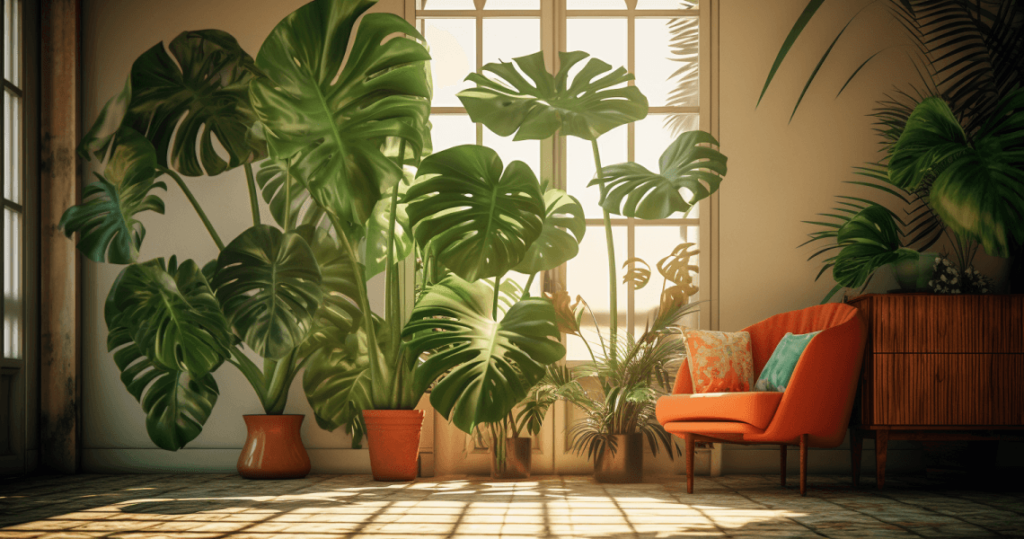
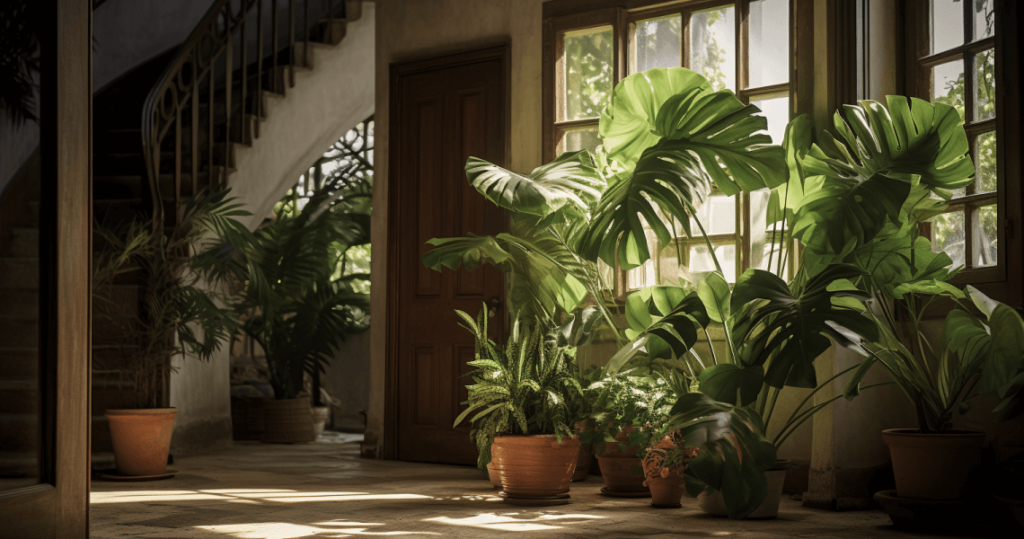
While they thrive in bright, indirect light, Monstera plants can also flourish under the gentle glow of fluorescent lights, making them a versatile and attractive addition to any indoor space.
- Spider Plant
Known for its adaptability and ease of cultivation, the Spider Plant ranks among the most user-friendly houseplants. It exhibits a remarkable ability to flourish in a diverse range of environmental conditions.
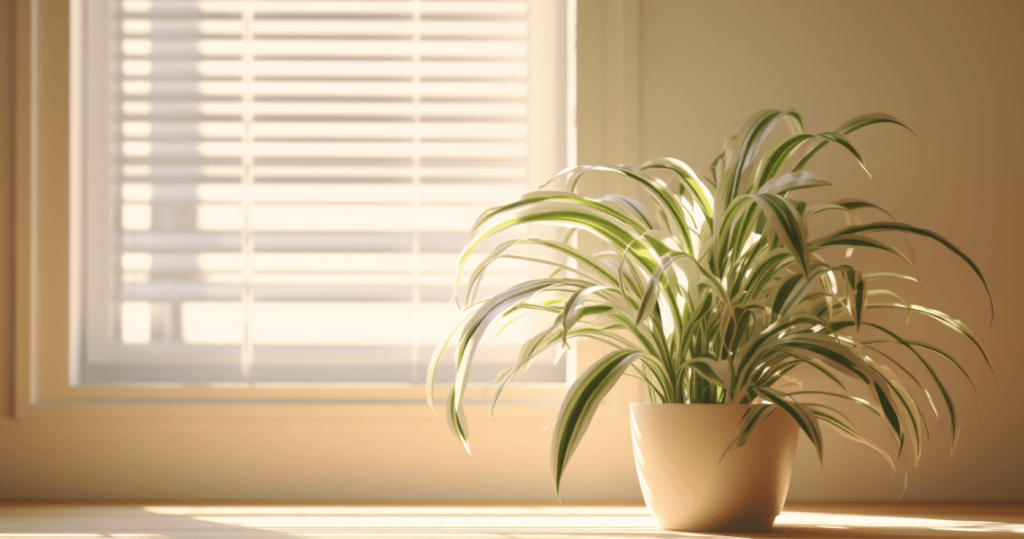

However, it’s worth noting that browning of the tips can occasionally be a concern. To optimize their growth and appearance, it’s recommended to position Spider Plants in bright, indirect light, where they are sure to thrive and exhibit their full potential.
READ ALSO: Get Plants And Flowers In Every Room
